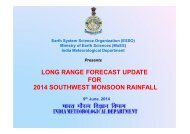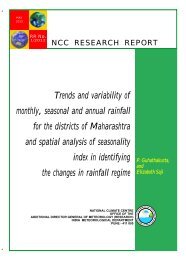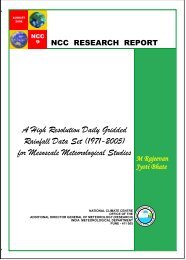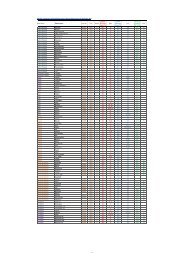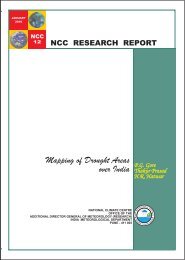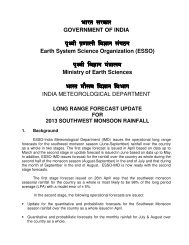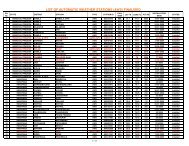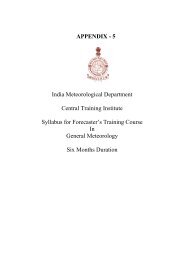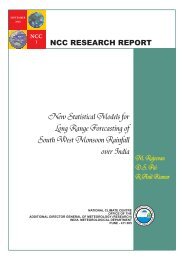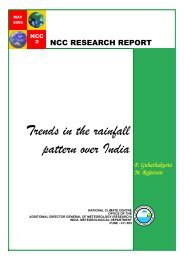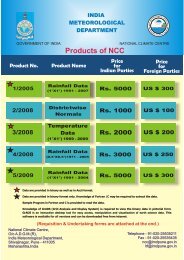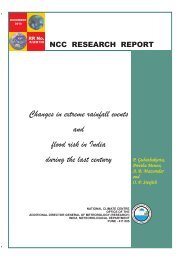BULLETIN OF IMSP - (IMD), Pune
BULLETIN OF IMSP - (IMD), Pune
BULLETIN OF IMSP - (IMD), Pune
- No tags were found...
You also want an ePaper? Increase the reach of your titles
YUMPU automatically turns print PDFs into web optimized ePapers that Google loves.
distributed but the users are able to access electric power without bothering about thesource of energy and its geographical location. Computer scientists are considering gridcomputing as the next generation distributed computing. Grid is seen as the latest andmost complete revolution of more familiar developments such as distributed computing,the Web, peer-to-peer computing and visualization technologies. Grid computing keepsentire complexity hidden and its multiple users enjoy a single unified experience. UnlikeWeb which primarily enables communication, grid computing enables completecollaboration towards common goals. Unlike peer-to-peer computing, grid computingallows many-to-many sharing of files. Unlike clusters and distributed computing whichneed physical proximity and operating homogeneity, grids can be geographicallydistributed and heterogeneous. Unlike visualization technologies which visualize a singlesystem, grid computing enables the visualization of vast and disparate IT resources. Gridcomputing represents a big step forward in the world of computing. Grids are inherentlymore resilient and flexible than standalone systems. Properly configured grid has nosingle point of failure. On the flexibility side, grids are not limited to single applicationsbut can run many applications simultaneously without any of the resource constraints thatmay arise from running multiple applications on a single server.Like the Internet, grid computing also got its start in the research and academiccommunities. Grid computing uses more of a server’s computing power. Today’scomputers, like human brains, typically operate at only a fraction of their capacity; theyoften sit idle as a processor waits for data. On the grid, the idle time of hundreds, eventhousands, of servers can be harnessed by any user needing a massive infusion ofprocessing and computing power. Grids have given rise to the concept of a ‘VirtualOrganization’ consisting of ever changing groups of individuals and institutionsexploiting the resources of the grid for a variety of purposes, much the way thatindividuals in the same household exploit electricity for their own and different needs.The advent of broadband has enabled the networked computers on the grid to share dataconstantly at high speeds which is very critical to the functioning of any sophisticatednetwork like grid. In the context of grid computing we should however keep in mind thatinformation needs are increasing at an unimaginable rate every year. The largestcontributor to this enormous increase has been the networked nature of informationexchange and the growing dependence on networked services.In the realm of grid computing, ‘Data Grid’ represents network of distributed storageresources, from archival systems, to caches, to databases, that are linked together tocreate global and persistent identifiers. Data grids enable sharing of a very large amountof data and files that are distributed across remote storage repositories and evencontrolled by different administration domains. Grid architecture makes thesegeographically distributed files to appear to be local as if they are residing on your localdisk. Data grids have found applications in various projects in diversified fields viz.Physics, Chemistry, Astronomy, Ecology, Medical Sciences, Molecular Sciences,Seismology, Distributed Databases, and Neuro Sciences. Data grids are conceptuallycapable of providing mechanisms for describing geographically distributed data usingmetadata and annotations, and using this ‘data about data’ to discover data of interest.There is a lot of hype about grid computing, as is apparent from the number of different2



